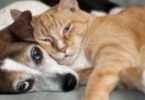Fabric, Textile, stitching, types, care, pattern quiz
What is the primary characteristic of woven textile fabric?
(a) It is created by knitting loops of yarn together.
(b) It is made using a weaving process, with yarns crossing at right angles.
(c) It is formed by compressing fibers together with heat and pressure.
(d) It is produced by felting fibers to create a solid structure.
The largest producer of wool in the world is?
(a) Australia
(b) China
(c) Argentina
(d) New Zealand
Rayon is often considered a “semi-synthetic” fiber because:
(a) It is made from a combination of different natural fibers.
(b) It is a purely synthetic material created in a lab.
(c) It is derived from plant materials but goes through a chemical process.
(d) It is produced from animal sources like silk.
Wool is a natural fabric obtained from the fleece of which animal?
(a) Sheep
(b) Silk worms
(c) Cotton plants
(d) Flax plants
Man-made synthetic fibers are created through:
(a) Harvesting from plant sources.
(b) Extracting from animal sources.
(c) Natural weathering and erosion.
(d) Chemical processes in a laboratory.
Related: multiple choice questions on Kitchen Equipment
Which of these garments originated on the continent of Asia?
(a) Poncho
(b) Kaftan
(c) Bloomers
(d) Y fronts
Angora wool is extracted from —
(a) rabbit
(b) sheep
(c) fox
(d) goat
Lycra is known for its:
(a) Natural origin from plant fibers.
(b) High absorbency of moisture.
(c) Resistance to wrinkles and creases.
(d) Stretchiness and elasticity.
What tough, tightly woven fabric used to make suits, overcoats, trousers and other garments, traditionally made from steel wool fibre, was patented by Burberry in 1888?
(a) Gabardine
(b) Worsted
(c) Tweed
(d) Twill
Microfiber is known for its:
(a) Coarse texture and rough feel.
(b) Heavy weight and insulation properties.
(c) Extremely small diameter fibers and soft touch.
(d) Natural origin from plant sources.
Which of the following types of clothing is often made using rayon?
(a) Winter coats
(b) Bathing suits
(c) Wool sweaters
(d) Summer dresses
What is the term for a textile fabric made by interlocking loops of yarn with needles?
(a) Woven
(b) Felted
(c) Knitted
(d) Non-woven
Related: Porter Value Chain MCQ
Synthetic fiber obtained from cellulose is known as
(a) Decron
(b) Nylon
(c) Teflon
(d) Rayon
What is a notable characteristic of microfiber fabric in terms of cleaning?
(a) It is ineffective at picking up dust and dirt.
(b) It tends to leave streaks on surfaces.
(c) It has superior absorbency and the ability to trap particles.
(d) It is recommended for use without any cleaning agents.
What is the word for a piece of material that is used to mend a hole in an item of clothing?
(a) Patch
(b) Plot
(c) Plain
(d) Park
Polyester is a commonly used man-made fiber that is known for its:
(a) Natural origin from plant fibers.
(b) Breathability and moisture absorption.
(c) Resistance to wrinkles and creases.
(d) Biodegradability and eco-friendliness.
What does the term “dry clean only” on a clothing label typically mean?
(a) The cloth can only be cleaned by using a dryer.
(b) The cloth should be hand-washed and air-dried.
(c) The cloth should not be washed with water and should be taken to a professional cleaner.
(d) The cloth is resistant to stains and spills.
Which of the following applications is microfiber commonly used for?
(a) Heavy-duty outdoor furniture upholstery
(b) Industrial machine belts
(c) Athletic shoes and sportswear
(d) Insulating winter coats
What type of clothing is often made using Lycra?
(a) Denim jeans
(b) Sweaters
(c) Wool coats
(d) Silk dresses
What embroidery technique is to gather fabric so that it can stretch, and was commonly used in cuffs, bodices, and neck lines in garments where buttons were undesirable before elastic?
(a) Couching
(b) Smocking
(c) Sashiko quilting
(d) Broderie Anglaise
Which of the following fabric types is known for its lustrous appearance and smooth feel?
(a) Denim
(b) Corduroy
(c) Silk
(d) Fleece
Viscose is often appreciated for its:
(a) Natural sheen similar to silk.
(b) Resistance to wrinkles and creases.
(c) Stretchiness and elasticity.
(d) Heat retention properties.
Shirts, trousers, skirts etc were brought to India in the eighteenth century by whom.
(a) Europeans
(b) Mongols
(c) Afghans
(d) Turks
What is the general rule for washing fabrics with the label “cold water wash”?
(a) Wash the fabric in hot water for better results.
(b) Use cold water to wash the fabric to prevent shrinking or color fading.
(c) Use warm water for a thorough clean.
(d) The water temperature does not matter for this fabric.
Cotton is highly valued for its:
(a) Heat retention and insulation properties.
(b) Resistance to wrinkles and creases.
(c) High absorbency of moisture.
(d) Eco-friendliness and biodegradability.
For which of these would duck cloth most likely be used?
(a) Lining a duck’s nest
(b) Making sheets for a baby’s cot
(c) Blowing one’s nose
(d) Painting on
What is a defining characteristic of velvet?
(a) It has a rough texture and matte finish.
(b) It is highly breathable and lightweight.
(c) It is known for its soft and plush surface.
Polyester is known for its:
(a) Natural origin of plant fibers.
(b) Breathability and moisture absorption.
(c) Wrinkle resistance and durability.
(d) Biodegradability and eco-friendliness.
How should fabrics with the label “delicate cycle” be treated during washing?
(a) They should be washed with heavy agitation and strong detergents.
(b) They can be washed with other fabrics without any special precautions.
(c) They should be washed gently with mild detergents and a slow washing cycle.
(d) They are not suitable for machine washing.
What type of clothing or accessories is often made using velvet fabric?
(a) T-shirts
(b) Bathing suits
(c) Formal dresses and evening wear
(d) Athletic activewear
What technique is used to produce macrame?
(a) Weaving
(b) Knitting
(c) Knotting
(d) Embroidery
Nylon is known for its:
(a) Natural origin from plant fibers.
(b) Resistance to wrinkles and creases.
Which type of clothing is commonly made from cotton?
(a) Wet suits for scuba diving
(b) Ski jackets for cold weather
(c) Lightweight summer dresses
(d) Heavy wool coats
Which process is commonly used in fabric manufacturing to convert raw materials into fibers suitable for spinning?
(a) Weaving
(b) Felting
(c) Carding
(d) Knitting
Related: How Much You Know About Credit Cards?
How is woven fabric different from knitted fabric?
(a) Woven is made by interlocking loops of yarn, while knitted fabric is created using a weaving process.
(b) Woven has a smooth surface, while knitted fabric has a textured surface.
(c) Woven is generally stretchier than knitted fabric.
(d) Woven is made by interlacing yarns in a structured pattern, while knitted fabric is made by looping yarns together.
What is a common use of polyester fabric in the fashion industry?
(a) Formal evening gowns
(b) Lightweight summer scarves
(c) Wool sweaters
(d) Cotton t-shirts
What is the term for the process of passing fibers through a series of rollers to create a continuous strand?
(a) Spinning
(b) Weaving
(c) Felting
(d) Braiding
Nylon was initially developed for:
(a) Outdoor furniture upholstery.
(b) Industrial machine belts.
(c) Parachutes and military applications.
(d) Traditional Japanese clothing.
Related: Bagpipes knowledge quiz with answers
What does the term “bleeding” refer to in the context of fabric washing?
(a) Adding bleach to the washing cycle for brighter colors.
(b) The process of fading or running of colors during washing, leading to color transfer.
(c) The method of hand-washing delicate fabrics.
Denim is traditionally associated with which type of clothing?
(a) Bathing suits
(b) Athletic activewear
(c) Formal suits
(d) Jeans and casual wear
What is yarn primarily used for?
(a) Cooking and baking
(b) Building structures
(c) Making clothing and textiles
(d) Generating electricity
What is a notable characteristic of polyester?
(a) It is prone to shrinking and fading when washed.
(b) It is highly breathable and cool to the touch.
(c) It is made from natural silk fibers.
(d) It can be easily composted and recycled.
What is the term for the diagonal pattern that is often seen on denim?
(a) Plaid
(b) Gingham
(c) Houndstooth
(d) Twill
Which of the following fabrics is typically safe for machine washing with warm water?
(a) Silk
(b) Wool
(c) Cotton
(d) Rayon
Nylon is commonly used in which type of clothing?
(a) Wool sweaters
(b) Cotton t-shirts
(c) Denim jeans
(d) Athletic activewear
Yarn is typically made by:
(a) Weaving fibers together into a fabric.
(b) Spinning fibers together into a thread.
(c) Folding paper to create a solid structure.
(d) Welding metals to form a structure.
What precaution should be taken when washing fabrics with delicate embellishments or buttons?
(a) Use the highest washing machine setting for thorough cleaning.
(b) Turn the fabric inside out before washing to protect the embellishments.
(c) Use a strong detergent for better stain removal.
(d) Avoid fabric softeners to prevent fading of colors.
Which of the following materials is a natural fiber commonly used in clothing?
(a) Polyester
(b) Nylon
(c) Spandex
(d) Cotton
What is a distinguishing feature of silk?
(a) It is primarily used for heavy-duty outdoor applications.
(b) It is known for its elasticity and stretchiness.
(c) It is a natural fiber produced by silkworms.
Tencel is derived from which type of raw material?
(a) Plant-based fibers
(b) Synthetic polymers
(c) Animal fur
(d) Metallic threads
What is a common natural source of fibers used to make yarn?
(a) Plastic bottles
(b) Metal wires
(c) Plant and animal fibers
(d) Glass fibers
Natural fibers are derived from:
(a) Synthetic chemical processes.
(b) Plant or animal sources.
(c) Petrochemical manufacturing.
(d) Mineral deposits.
What is a notable characteristic of Tencel?
(a) It is highly resistant to wrinkles and creases.
(b) It has a natural sheen similar to silk.
What is the process of obtaining silk fibers from silkworms called?
(a) Weaving
(b) Felting
(c) Spinning
(d) Sericulture
Related: Theatre trivia quiz multiple choice
Satin is known for its:
(a) Rough texture and matte finish.
(b) Lightweight and breathable properties.
(c) Lustrous surface and smooth feel.
Tencel is known for its:
(a) High absorbency of moisture.
(b) Resistance to wrinkles and creases.
Wool is a natural fiber obtained from:
(a) Cotton plants.
(b) Flax plants.
(c) Sheep’s fleece.
(d) Silkworms.
What is another common name for Lycra?
(a) Wool
(b) Cotton
(c) Spandex
(d) Silk
Polyester is a common type of man-made synthetic fabric known for its:
(a) Natural origin from plant fibers.
(b) Breathability and moisture absorption.
(c) Resistance to wrinkles and creases.
How is satin different from other fabrics?
(a) It is made from natural plant fibers.
(b) It has a unique three-dimensional texture.
(c) It is woven with a special technique that creates a shiny surface.
(d) It is known for its heavy weight and insulation properties.
Which of the following is an example of a man-made synthetic fiber?
(a) Wool
(b) Cotton
(c) Silk
(d) Nylon
Which of the following is a natural fabric obtained from the fibers of flax plants?
(a) Polyester
(b) Silk
(c) Cotton
(d) Linen
Related: SWOT analysis quiz for students
What type of clothing is often made using satin?
(a) Denim jeans
(b) Athletic activewear
(c) Evening gowns
(d) Wool sweaters






